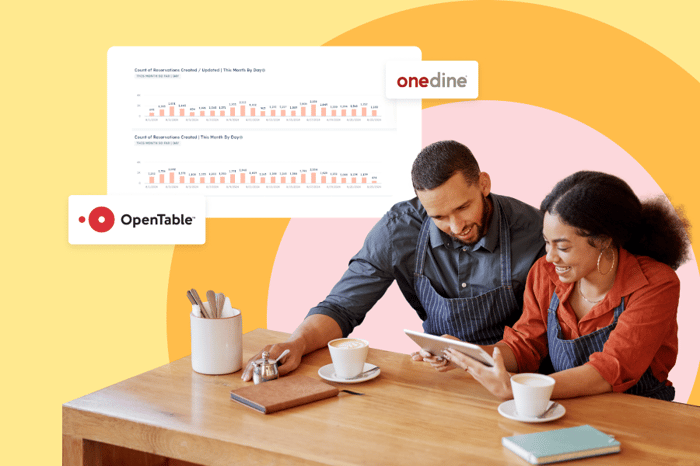HubSpot Reporting & Analytics Web Development
What You Need to Know About Tracking URLs for HubSpot Campaigns
03/02/2021 • 4 min read • Written by Sara Sprenger
Table of Contents
Your HubSpot campaigns typically involve several different moving parts that may cross over departments like marketing, sales, and customer service. One of the most common elements in any HubSpot campaign?
URLs.
With a tracking URL, you can see how and when visitors access your site through a URL in a specific campaign. It can help you better understand the effectiveness of your marketing campaign because if someone isn't clicking ANY of your links, that may signify a problem. Plus, with HubSpot's enhanced analytics capabilities, you can now track user journeys more comprehensively than ever before.
Here's what you should know about tracking URLs in HubSpot campaigns.
What Is a Tracking URL?
A tracking URL is a standard URL enhanced with specific parameters that you select. When visitors come to your site through these URLs, HubSpot captures and analyzes the information in these parameters, providing detailed insights about your traffic sources and campaign performance.
What Are UTM Parameters?
UTM parameters are the foundation of your tracking URL. These tags help you monitor your website's traffic sources and identify which marketing campaigns are driving traffic to your webpage. For example, if you want to know if an Instagram Reels campaign is leading buyers to your product page, you should create a tracking URL with specific UTM parameters. You can select from:
- Source – Shows where your visitors are coming from. This could be anything from email marketing, social platforms (Instagram, TikTok, LinkedIn), paid advertising, or custom sources.
- Medium – The channels bringing visitors to your site. Examples include social media, email, paid social, display ads, or organic search.
- Campaign – The specific campaign your URL or promotion is associated with. This will be unique to your organization.
- Term – Shows any paid keywords or search terms that you're targeting within your campaign.
- Content – Identifies the specific element of your ad or promotion that someone clicked on, helping with A/B testing and content optimization.
It's important to note that only campaign and source are mandatory for every tracking URL. The rest are optional, allowing you to create combinations that work best for your specific tracking needs.
Why Should You Use Tracking URLs
You'll want to create a tracking URL whenever you want to monitor traffic from a specific campaign or source. Modern HubSpot users typically implement these URLs across:
- Email marketing campaigns
- Paid advertising (PPC, social ads, display)
- Social media posts (organic and paid)
- Influencer marketing campaigns
- Content marketing initiatives
- Sales team meeting links
- Cross-channel marketing campaigns
- Partner marketing efforts
How To Create a Tracking URL
Before creating a tracking URL, HubSpot recommends setting up your campaign and adding or building any related assets for it. If you make your URL before your campaign, you can't associate the URL with it – which would limit your tracking capabilities. You should also double-check the spelling, grammar, and naming conventions in your UTM parameters to ensure consistency with your brand guidelines.
Here's the current process to create a tracking URL:
- Log in to your HubSpot account
- Navigate to "Marketing" > "Planning and Strategy"
- Select "Tracking URL Builder"
- Click "Create Tracking URL"
- Enter your destination URL
- Add your required UTM parameters (campaign and source)
- Add optional parameters as needed
- Click "Create"
- Use the "Actions" dropdown to copy your tracking URL
- Implement your URLs in your campaign content
Quiz Yourself: Are You Using HubSpot to Its Fullest?
Reporting on Your Tracking URLs
The primary purpose of tracking URLs is to see which of your campaigns are working and which aren’t so you can optimize your efforts. Be sure to analyze your tracking URLs like you would your email open rates or blog views.
To do this:
- Navigate to "Reports" > "Analytics Tools"
- Select "Traffic Analytics"
- Choose "Sources" or "Campaigns" view
- Set your desired date range and reporting frequency
- Filter by specific campaigns, sources, or other parameters
Reporting features include:
- Attribution reporting across the customer journey
- Multi-touch attribution modeling
- Custom report builders
- Campaign performance dashboards
- Cross-channel analytics
- ROI tracking
- Conversion path analysis
Best Practices for Tracking URLs
To maximize the effectiveness of your tracking URLs:
- Maintain Consistent Naming Conventions
- Use lowercase letters consistently
- Avoid spaces (use underscores or hyphens)
- Keep parameters concise but descriptive
- Document Your Parameters
- Create a central document listing all parameter conventions
- Share with team members for consistency
- Regular audit and update parameter lists
- Implement Regular Analysis
- Review tracking data weekly or monthly
- Compare performance across channels
- Use insights to optimize campaigns
- Track conversion paths and attribution
- Utilize Advanced Features
- Set up custom parameters for specific needs
- Integrate with HubSpot's campaign tools
- Use A/B testing with different URLs
- Implement dynamic URL parameters
Get Help
With tracking URLs and HubSpot's enhanced analytics capabilities, you can gain deep insights into your campaign performance and optimize your marketing efforts accordingly. These guidelines should help you create and implement tracking URLs effectively. However, if you'd like any help or a deeper dive into advanced tracking strategies, please reach out to our team of experts.
By: Sara Sprenger
As the Chief Marketing Officer of Lynton, Sara is a jack of all trades. She thrives on diving into diverse areas like marketing, web development, and integrations, all with the goal of helping clients unlock their full potential. She's passionate about tackling challenges, solving complex problems, and embracing new experiences. When she's not using HubSpot to solve the world, you’ll likely find her being a Floridian at the beach or spending quality time with my dog, Maple Leaf.
You May Also Like

Inbound Marketing
How to Use Data Analytics for Creative Marketing
Learn how to leverage analytics, smart content, and A/B testing for impactful campaigns for innovative data-driven marketing ...
Keep Reading
HubSpot
5 Great Reasons to Use Progressive Profiling in HubSpot
Discover how HubSpot's progressive profiling can boost your lead qualification, increase conversion rates, and enhance your m...
Keep Reading
Integrations
How to Integrate Restaurant Software with HubSpot
Learn how integrating OpenTable and OneDine with HubSpot can impact your restaurant marketing, enabling personalized campaign...
Keep ReadingSubscribe Today

